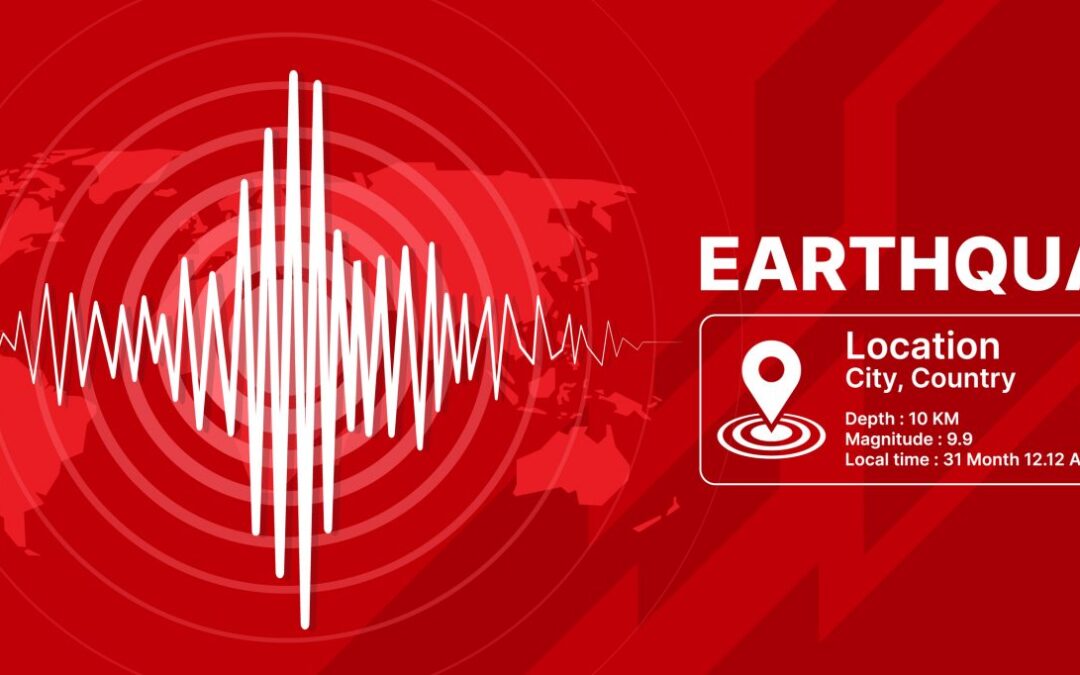Earthquakes come without a warning. When the ground starts shaking, priorities instantly narrow to securing your property and protecting your loved ones. One critical tool in your defensive arsenal is the earthquake seismic valve. This silent sentinel stands guard over your gas lines, poised to shut them down at the first sign of seismic activity and potentially save your home from catastrophic damage. But what exactly is an earthquake seismic valve, and why is it a vital installation in every home? Let’s delve deep into the mechanics and benefits of this unsung hero in home safety.
Understanding the Basics
What is it?
An earthquake seismic valve is a safety device installed in the gas pipeline system of your home or commercial building. This valve automatically shuts off the gas supply when it detects significant tremors or vibrations, mitigating the risk of gas leaks and fires that can occur post-earthquake. It’s like a vigilant security guard, always ready to spring into action to protect your home.
Why is it necessary?
Natural gas leaks can result in catastrophic incidents, including devastating fires and explosions. With a seismic valve in place, you add a robust protection layer, ensuring safety for your property and loved ones.
To add more context, a considerable proportion of post-earthquake fires are ignited as a direct result of natural gas leaks. Certain conditions elevate the possibility of experiencing gas leaks in the aftermath of an earthquake. These include:
- Structural Weaknesses: Buildings with inherent structural deficiencies stand at a heightened risk, as they can sustain severe damages during earthquakes, making gas leaks more probable.
- Unanchored Gas Appliances: Appliances that are not securely anchored can easily move or tip over when the earth shakes, leading to breakages in the gas lines.
- Rigid Pipe Connections: Using rigid pipe connections, as opposed to flexible ones, can exacerbate the risk. Flexible pipe connections are designed to withstand movements, proving to be more resilient during seismic activities and reducing the likelihood of leaks.
Earthquake seismic valves emerge as a critical tool, standing guard to prevent such catastrophic events by promptly shutting down the gas supply at the first inkling of significant tremors.
How does it operate?
A seismic valve is essentially activated through vibrations. Let’s delve deeper into its mechanics.
These valves are equipped with sensitive mechanisms that respond to the ground’s movement, promptly shutting off the gas flow to prevent potential hazards. The mechanics can vary, but they often involve a ball or similar component obstructing the gas pathway in response to shaking.
Is it reliable?
Absolutely! Earthquake seismic valves have undergone stringent testing to ensure their reliability during an earthquake. When the stakes are this high, settling for anything less than a proven, dependable system is not an option.
Types of Seismic Valves
As with any technology, seismic valves come in various shapes and designs, each catering to different needs. Let’s explore the most popular types:
Excess Flow Valves
Designed to halt the gas flow in case of a substantial increase in the flow rate, these are ideal for detecting ruptures in the pipeline.
Seismic Excess Flow Valves
These combine the features of seismic valves and excess flow valves, offering a dual protection mechanism against abrupt increases in flow rate and seismic activities.
Essential Features to Look For
When considering a seismic valve, several features should be on your checklist to ensure optimum safety and functionality.
Sensitivity Adjustment
A valve with adjustable sensitivity allows you to tailor the device according to the seismic activity levels in your region, ensuring precise and timely responses.
Easy Reset Functionality
Post-activation, the valve should allow for a simple reset process, enabling you to restore the gas supply without any professional assistance, yet with safety measures in place.
Durability
Opt for valves built with high-quality materials to withstand the test of time, offering unyielded protection over the years.
The Regulatory Landscape
Globally, there is a growing emphasis on installing seismic valves, with various regions incorporating them into their safety regulations and building codes.
Legal Mandates
In several U.S. states and countries globally, installing seismic valves is legally mandated, especially in earthquake-prone areas.
Insurance Benefits
Insurance companies often favor homes equipped with seismic valves, offering discounts on home insurance premiums, thus adding a financial incentive to the safety perks.
The Installation Process
Finding the Right Spot
A seismic valve is installed at the natural gas meter, on the property owners side of the system. For appliances there is a thermal excess flow valve to effectively control the gas flow being used to the appliance which can suddenly turn off if the pipe is suddenly taken apart.
Professional Installation
For a seamless and secure installation, seeking the expertise of a professional installer is indispensable. They can evaluate the best valve for your needs and ensure its proper function through a meticulous installation process.
FAQs: Your Concerns Addressed
Before we close, let’s address some commonly asked questions:
How do I maintain a seismic valve?
Regular inspections by a professional ensure its optimal functioning, keeping it ready for any eventuality.
Are they expensive?
While there is a cost involved, considering the safety and potential savings from averting a catastrophe, it is a worthwhile investment.
How do seismic valves fare in terms of environmental sustainability?
Seismic valves play a crucial role in promoting environmental sustainability. By preventing gas leaks, which can lead to harmful emissions and contribute to air pollution, they help reduce the ecological impact during seismic events. Moreover, producing these valves often involves long-lasting and durable materials, ensuring that they do not need frequent replacements, thereby reducing waste and promoting a greener and safer environment.
What are some signs that indicate a need for valve maintenance or replacement?
Regular maintenance of seismic valves is essential to ensure their optimal functioning. Some signs indicating the need for maintenance or replacement include:
- Unusual Noises: Hearing strange sounds such as hissing or clanking from the valve area can be a sign of malfunction.
- Aging Valve: If the valve has been in use for many years, it might be nearing the end of its lifespan, necessitating a check-up.
- Physical Damages: Noticing visible damages like cracks, rust, or wear and tear on the valve is a clear sign that maintenance or replacement is required.
- Recurrent Activation: If your valve is getting triggered too frequently, even during minor tremors, it might be a sign that it is too sensitive and needs adjustment or replacement.
To ensure safety and efficiency, a professional should inspect the valve periodically, even if no obvious signs of wear are present.
Can I install a seismic valve myself, or do I need professional help?
While it might be tempting to install a seismic valve by yourself, especially if you have some experience with plumbing and gas lines, it is strongly recommended to seek professional help. Installation involves understanding the intricate details of your gas system and ensuring the valve is fitted correctly to function as intended. Professionals will not only secure a proper installation but also ensure that the setup complies with the local building codes and safety regulations.
In conclusion, an earthquake seismic valve is not just a mechanical device; it is a critical layer of safety in your earthquake protection arsenal.
Secure Your Home with Landa Plumbing
When it comes to securing your home, why compromise? Entrust your safety to the experts. At Landa Plumbing, we bring you a team of seasoned professionals to assist you in choosing and installing the perfect seismic valve tailored for your home. Don’t wait for a calamity to strike. Take a decisive step towards a safer tomorrow.
Contact Landa Plumbing today and give your home the protection it deserves.

